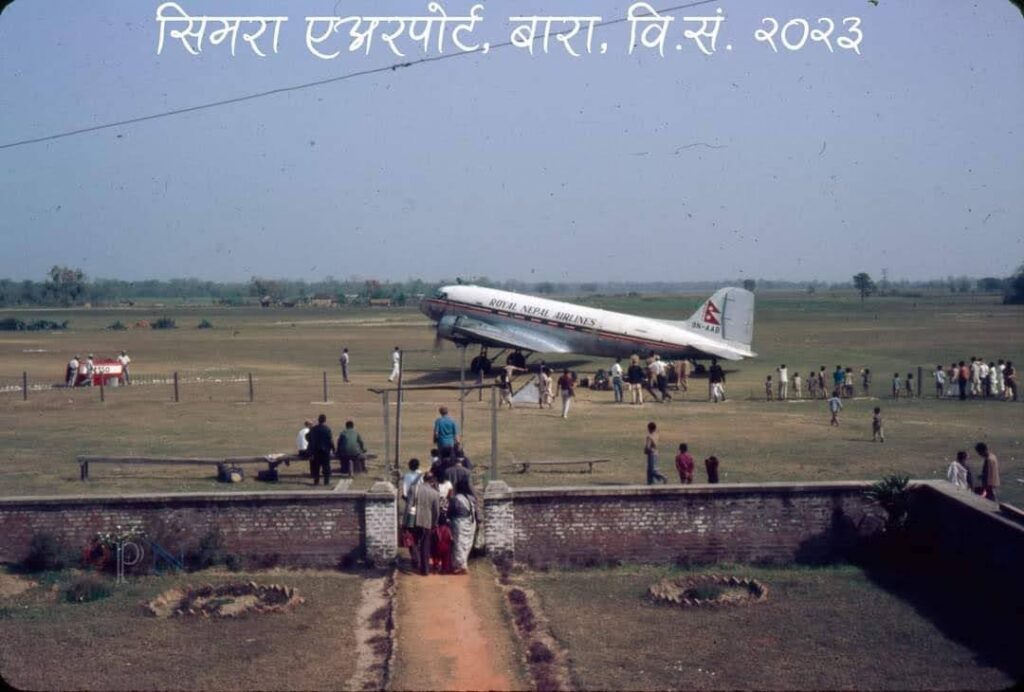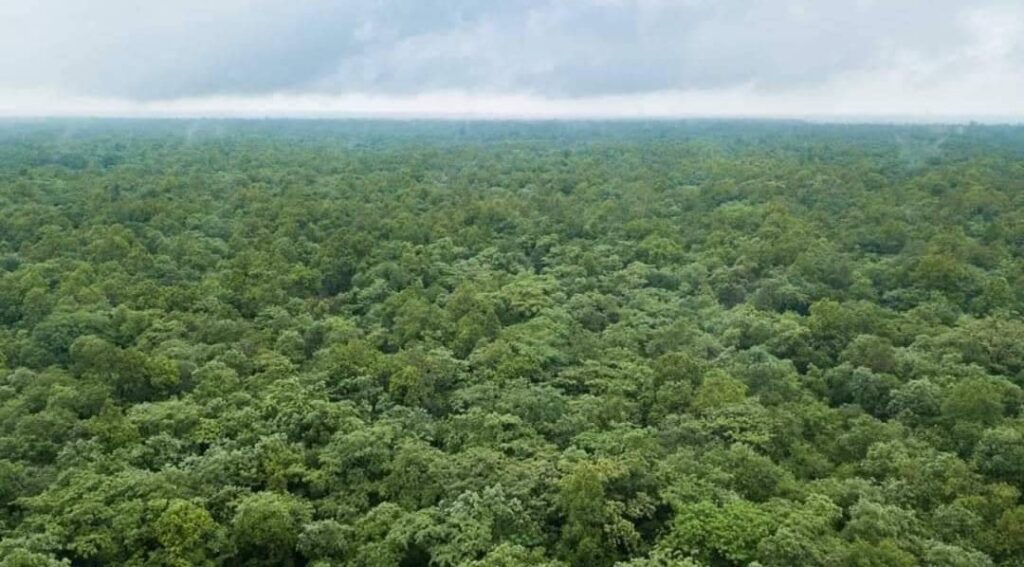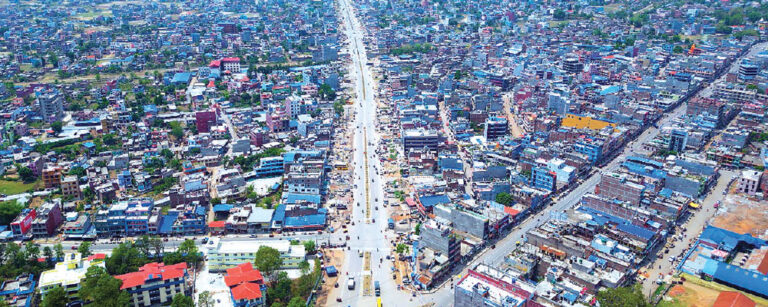An Exhilarating Journey through.
Dive into the soul of Nepal with a visit to the enthralling Bara District. Nestled in the heart of the country, this underexplored gem promises a unique blend of natural beauty, rich culture, and riveting history.
A Deeper Dive into the Bara District
Bara District, part of Nepal’s picturesque Madhesh Province, is a wondrous world nestled within the fertile Terai plains. It shares its boundaries with Rautahat to the east, Parsa to the west, Makwanpur to the north, and the Indian state of Bihar to the south. This location is no less than a geographical confluence, making it a meeting point of various cultures, traditions, and landscapes.
The district’s climate changes its colors as we move from the south to the north – transitioning from a subtropical climate in the plains to temperate in the hilly regions. This variance in climate presents a delightful treat for biodiversity lovers. The dense forests are a lush green tapestry, playing host to a diverse range of flora and fauna. From exotic plant species to rare wild animals, the Bara district holds several secrets within its natural treasure trove.

Language is more than a tool of communication here. The air of Bara district resonates with the echoes of Bhojpuri, Nepali, and Maithili – each language narrating a different tale of the land’s rich cultural history. Bhojpuri, with its unique charm, is spoken widely among the locals. However, the verses of the national language, Nepali, and Maithili also find their way into the district’s linguistic mosaic.
The Brahmins, Yadavs, and Rauts form the primary ethnic groups, each group contributing its unique traditions and customs to the district’s vibrant cultural fabric. The population here is a harmonious blend of different religious communities – the tranquil chants from the Hindu temples intertwining with the serene hymns from Muslim mosques and Buddhist monasteries. Despite the diversity, the district boasts a commendable literacy rate, indicating its emphasis on education.
Etymology: The Fascinating Tale of Bara
Peeling back the layers of Bara’s history, one stumbles upon the intriguing tale of its name. The district gets its name from “Baraha,” an avatar of Lord Vishnu in Hindu mythology. As per legend, the land was once offered to this deity, and the name Bara continues to keep this piece of history alive. It’s not just a name – it’s a nod to the district’s historical and religious ties, adding an extra dash of intrigue to your journey through the district’s winding roads and ancient folklore.
The Administrative Epicenter: Kalaiya
The bustling town of Kalaiya serves as the beating heart of the Bara district. As the district’s administrative headquarters, Kalaiya breathes life into the governmental machinery of Bara, ensuring its smooth functioning. Despite its administrative importance, Kalaiya retains its charm with the blend of urban hustle and the allure of age-old traditions. From the organized chaos of daily markets to the rhythmic routines of its inhabitants, the town encapsulates the vibrant essence of Bara.

Kalaiya’s political landscape is as diverse as its cultural fabric. It thrives under the aegis of several local bodies, each managing its administrative duties while catering to the specific needs of its local population. This democratic set-up empowers communities and fosters participatory development, proving instrumental in addressing local issues effectively.
Detailed Overview of Local Bodies
Among these local administrative bodies, the Jitpur Simara Sub-Metropolitan City stands out with its rapid urbanization and growing infrastructural development. Housing the district’s only airport, it serves as a significant transport hub, linking Bara to the rest of Nepal and beyond. The region is also renowned for its educational institutions and flourishing industries, providing both local employment and contributing to the district’s economy.

Nijgadh Municipality is another key administrative body, holding the promise of the district’s bright future. Pegged as the site for a proposed international airport, the municipality is at the center of developmental plans, poised to transform the face of Bara in the coming years.
The Kolhabi Municipality, with its rich history and cultural heritage, plays a pivotal role in preserving and promoting Bara’s traditional identity. Simultaneously, its efforts towards improving educational and health facilities reflect its commitment to sustainable development.

In addition to these, the district encompasses one more sub metro, three more municipalities and nine rural municipalities, each a microcosm of Bara’s diverse landscape. They are: Kalaiya sub-metropolitan city, Mahagadhimai, Simraungadh, Pacharauta municipality, Pheta, Bishrampur, Prasauni, Adarsh kotwal, Karaiyamani, Devtal, Parwanipur, Baragadhi and Suwarna rural municipality.
From the agricultural hub of Prasauni to the industrious Pacharauta, these municipalities mirror Bara’s multifaceted identity.
All these local bodies, functioning in synergy, propel Bara district towards growth, ensuring that while its roots remain firmly grounded in its rich heritage, it continues to reach out towards the horizons of development and progress.
Exploring the Cornucopia of Attractions in Bara District
Get ready to embark on an unforgettable expedition as you delve into the treasure trove of attractions that Bara district has to offer. Every corner of this district is filled with a new experience waiting to unfold, leaving you spellbound at every turn.

Simraungadh: The Echoes of History
Step back in time with a visit to Simraungadh, an ancient city that encapsulates the grandeur of Nepal’s historical architecture. This archaeological paradise is dotted with age-old ruins and remnants of palaces and temples that offer a glimpse into Nepal’s glorious past. From intricately carved stone sculptures to grand structures standing testimony to the architectural prowess of yore, Simraungadh is a history buff’s delight. The experience is akin to leafing through the pages of a living history book.
Parsa Wildlife Reserve: Nature’s Playground
If you’re a wildlife enthusiast, the Parsa Wildlife Reserve is a must-visit. Home to diverse species of fauna like the Royal Bengal Tiger, leopard, sloth bear, and over 500 species of birds, this reserve offers an adrenaline rush like no other. As you navigate through the dense forests, every rustle, every call of the wild adds to the excitement, making you feel one with nature. It’s not just a wildlife reserve; it’s a world where nature plays out its most captivating scenes.

Gadhimai Temple: A Grand Spectacle
The Gadhimai Temple, dedicated to the goddess Gadhimai, holds immense religious significance. Known for its massive fair, which takes place every five years, the temple attracts pilgrims and tourists from all over the globe. The air is filled with chants, prayers, and a palpable sense of devotion, offering an experience that’s both spiritually enriching and culturally illuminating. Mingling with the locals and gaining insights into their beliefs and traditions will add another dimension to your exploration.

Each of these attractions presents a unique facet of the Bara district. They collectively weave a captivating narrative that compels you to immerse in the region’s diverse cultural tapestry, relish its natural beauty, and appreciate its historical richness.
A Sojourn to Remember
My trip to Bara remains etched in my memory, as a perfect mix of culture, adventure, and peace. The warm-hearted locals, their vibrant traditions, the delectable local cuisine – every aspect was an experience in itself, something no travel brochure can capture.
Embark on your adventure to Bara district and soak in the unspoiled beauty of this Nepalese gem. You’ll carry back memories that last a lifetime, and stories worth sharing. The charming Bara District awaits!
Frequently Asked Questions
The Bara district boasts a linguistic diversity, with Bhojpuri, Nepali, and Maithili being the predominant languages spoken by the locals. Each language reflects a different aspect of the district’s rich cultural history.
The Bara district is filled with a wealth of attractions. Simraungadh offers a peek into Nepal’s historical architecture. The Parsa Wildlife Reserve is a paradise for wildlife enthusiasts. Lastly, the Gadhimai Temple, known for its grand fair, is a significant religious site attracting pilgrims worldwide.
The climate in the Bara district varies from subtropical in the Terai plains to temperate in the hilly regions. This varied climate fosters a diverse range of flora and fauna, making it a haven for nature lovers.
Kalaiya serves as the headquarters of the Bara district. It is the administrative hub, ensuring the smooth functioning of the district’s various local bodies.
The Bara district is home to various ethnic groups, with Brahmins, Yadavs, and Rauts being the primary communities. Each group contributes its unique traditions and customs, adding to the district’s vibrant cultural fabric.
More…
If you know any more places where we can visit or any other information then feel free to comment of message us.
To read about different places visit thesandeshneupane.com you can find article in Nepali language here.
Watch videos of different places on YouTube channel named as THE SANDESH NEUPANE or click here.
All the photo copyright to the respective owner. For any querry or anything related to copyright mail me with proof at sandesh@thesandeshneupane.com or admin@thesandeshneupane.com .







